Gianduja Chocolate Mousse Cake
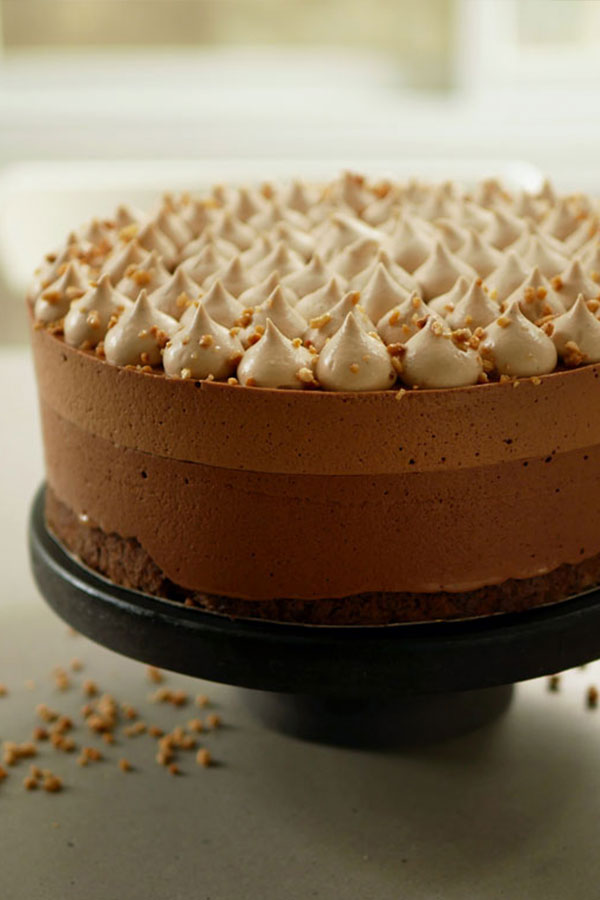
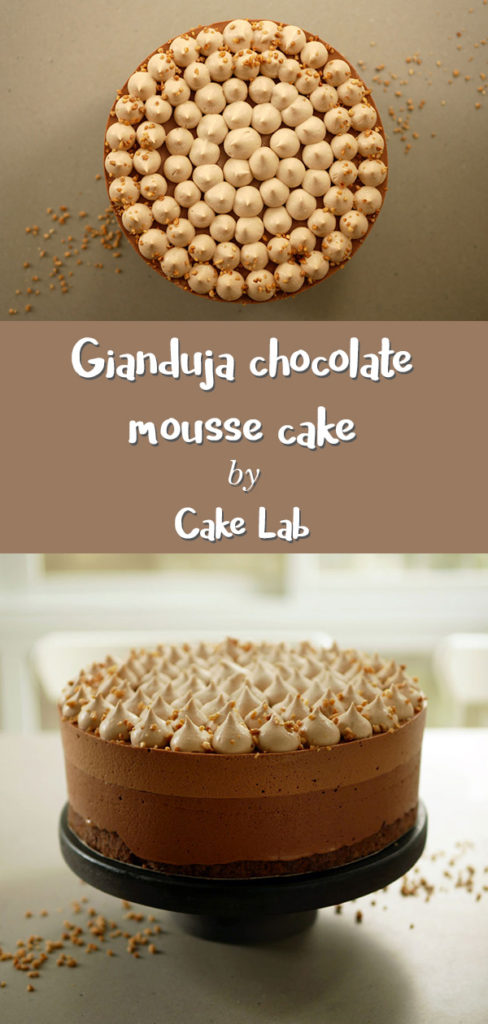
Two years ago I had a little breakdown. Not that I actually had anything to complain about, but I felt like something in my life was missing. Something small to complete a smile at the end of the day. One day, on my way to visit the family in Jaffa, I was listening on repeat to Lane Boy by Twenty One Pilot. Suddenly it struck me why I love this song so much.
The drumming towards the end of the song got me excited every time. At that moment I realized that many songs that excited me throughout my life contain a drumming bit that takes over the music and me with it. At that same moment I decided… I want to be a drummer!
I found that there’s a drumming school right across the street from my work. Well, I needed a little push in that direction, so I asked my friend Reut to come with me and help me decide if I should start drumming in my old age. “Peimot” (“beats”) – that’s the name of the place. It’s situated in the basement of a very tall building in the center of Jerusalem (not many tall buildings around here).
We entered the building and made our way towards the school. We walked along underground hallways that exuded that “What the hell!?” feeling you usually feel when you get lost in the Tel-Aviv central bus station. At some point we started hearing a thudding sound that left no doubt. We were in the right place.
I fell in love after just one lesson. Now I take lessons once a week, take out all the bad energies I accumulated during the week on the drums and come out of there energized and renewed. Just like therapy.
…
The drums do their part, but the teacher takes it one step further. He’s name is Shir, which literally translates to “song”. Shir is a drummer, pianist, guitarist and composer. It’s pretty impressive. What is more impressive though is his big love of music. I can’t recall a single lesson where he wasn’t excited about a musical segment or didn’t start singing and dancing to the rhythm.
Recently, his girlfriend Maya asked me to make him a surprise birthday cake. The order was for a chocolate mousse cake, Ferrero Rocher style. At first I thought to make a drum shaped mousse cake. A drum and a mousse cake have basically the same shape. Easy. At least that what I thought. The more I thought about it, things got more complicated.
Just before I started baking, I asked Maya if she would like a drum shaped cake or a classic cake. The choice was hard but she eventually chose the classic look and made my life so much easier. Or at least that’s what I thought.
…
It’s not that easy to change a mousse cake recipe. You need to find the perfect harmony between all the ingredients that will produce a mousse cake that is airy and creamy, and yet, stable enough to hold its shape. Too much cocoa butter and the cake would be too dense. Not enough gelatin and the cake would turn into a puddle after defrosting. I tried to be delicate in balancing the ingredients without compromising on taste and texture.
After some calculations, I made a gianduja chocolate mousse cake from milk chocolate, dark chocolate and hazelnut praline paste. It turned out so delicious. One of my favorites so far. Unfortunately, the mousse cake shrinks about 10% of its height. At first that really bugged me so I decided to venture and look for the most stable mousse cake. After a few experiments, it turns out that even the most stable mousse cake shrinks a bit.
So I returned to my recipe. Don’t worry, I’ll keep searching. But for now, I have to write and save this wonderful gianduja chocolate mousse cake recipe. I will allow it to shrink a little and try to ignore it as a perfectionist. Especially after adding the cherry on top, which in this case is a mascarpone and hazelnut praline frosting. Oh yeah!

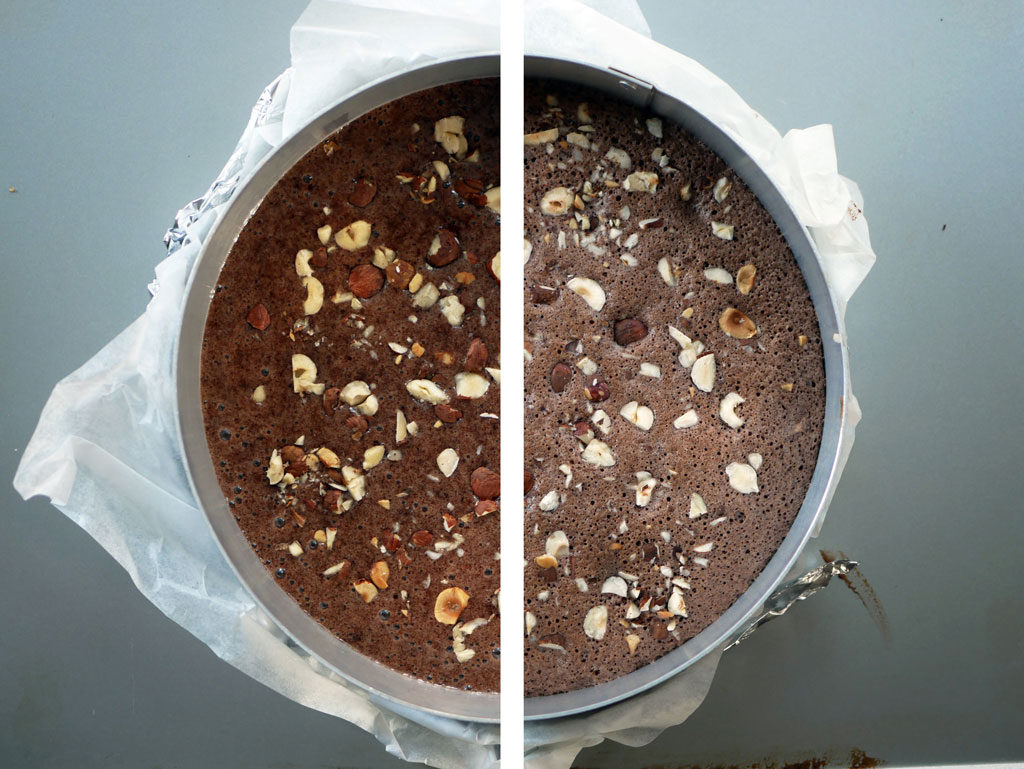
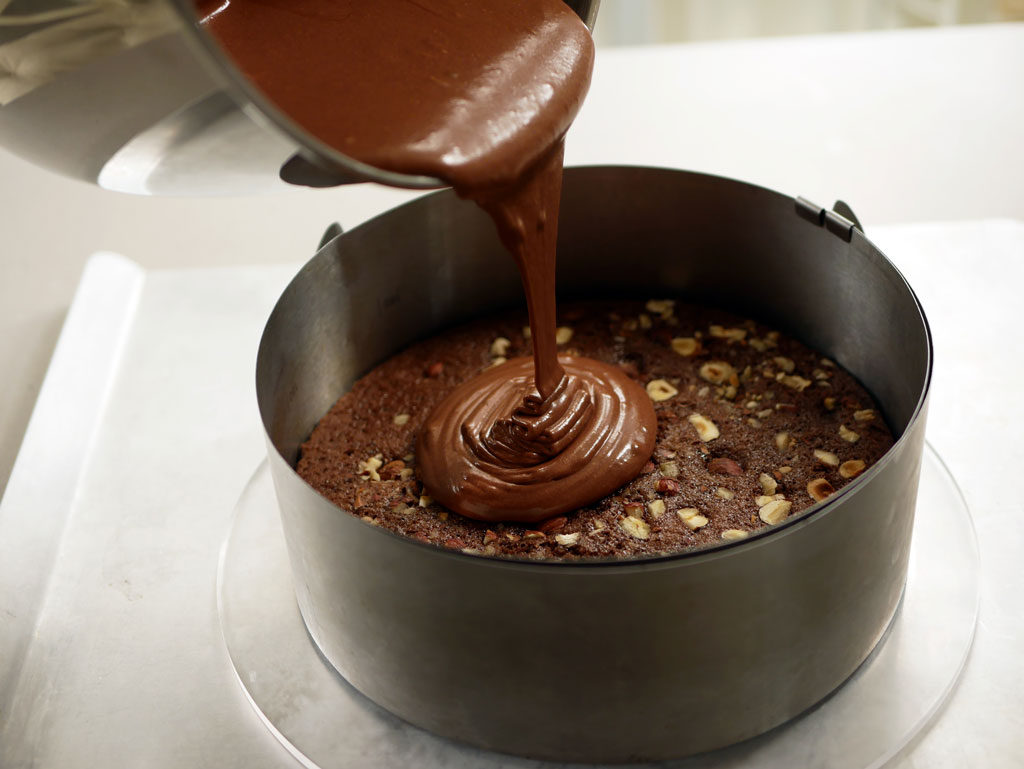


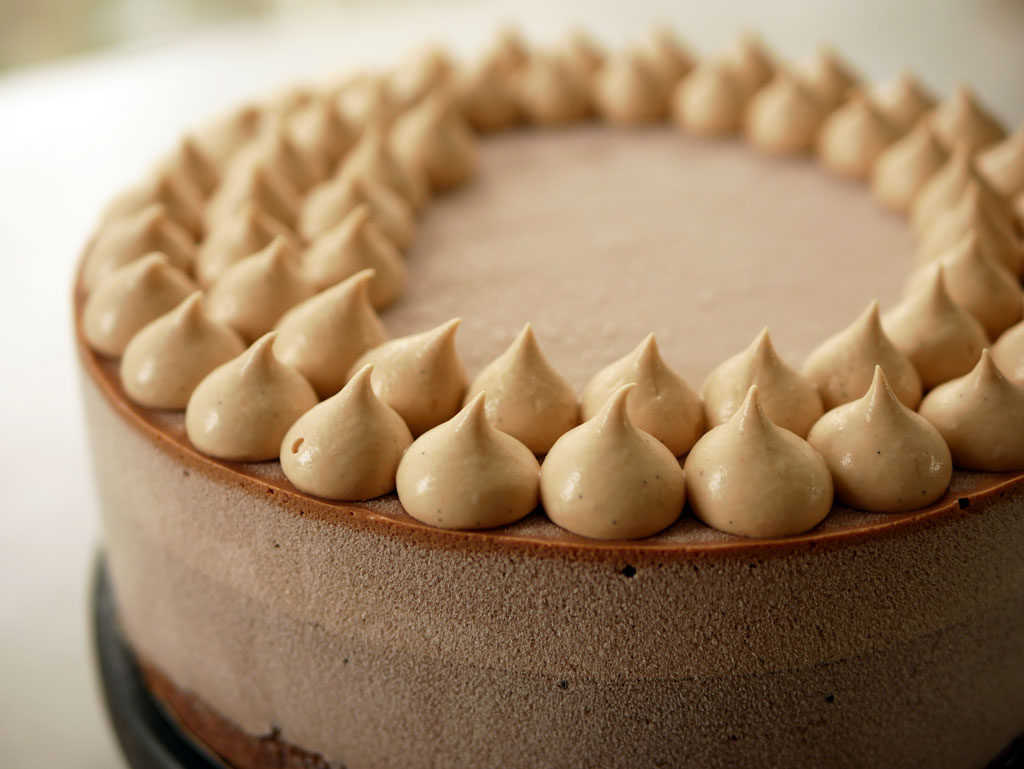
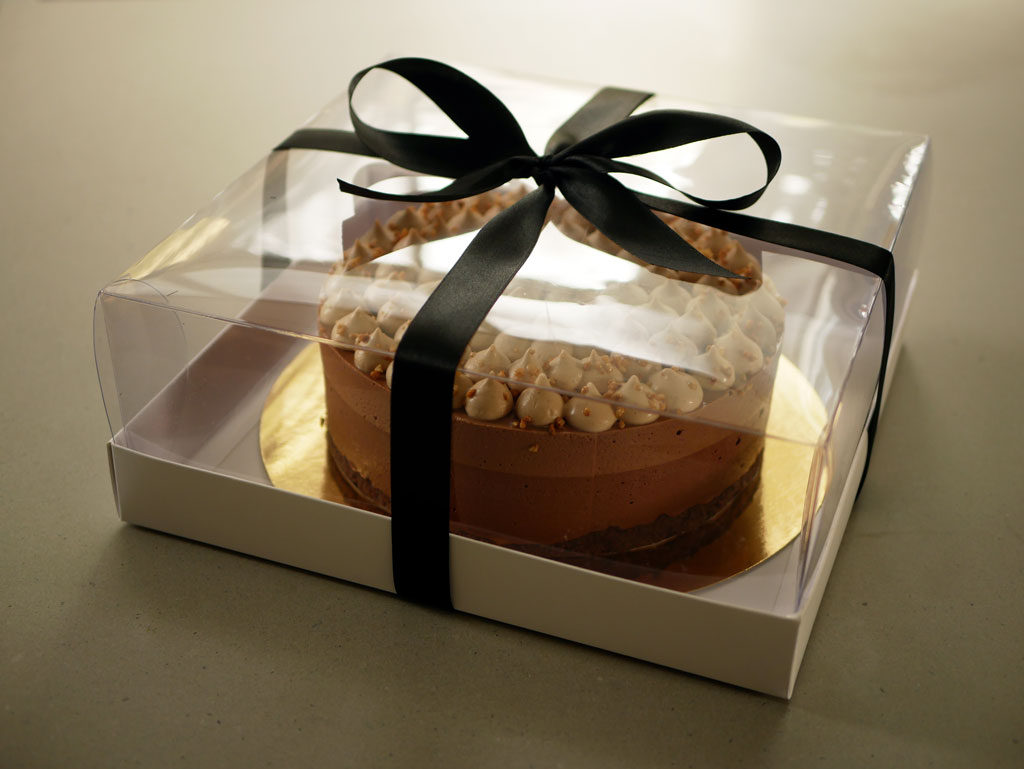
Ingredients
Gelatin mass
12 g gelatin powder
60 g water
Hazelnut joconde
95 g egg whites
30 g sugar
130 g whole hazelnuts
130 g powdered sugar
35 g flour
5 g cocoa powder
160 g eggs
25 g butter
50 g chopped hazelnuts (preferably peeled)
Dark gianduja chocolate mousse
80 g egg yolk
35 g eggs
40 g water
60 g sugar
25 g gelatin mass
260 g dark chocolate
60 g hazelnut praline paste
270 g heavy cream
Milk gianduja chocolate mousse
80 g egg yolk
35 g eggs
40 g water
60 g sugar
35 g gelatin mass
160 g milk chocolate
80 g dark chocolate
5 g cocoa butter
80 g hazelnut praline paste
270 g heavy cream
Hazelnut praline frosting
80 g mascarpone cheese
15 g powdered sugar
65 g hazelnut praline paste
½ tsp vanilla paste
160 g heavy cream
Decoration
Hazelnut bresilienne (chopped caramelized hazelnuts)
Equipment
A round ring, 22 cm diameter and at least 6cm height
Acetate strip, 10 cm height
2 double boilers
Thermometer
A pastry bag fitted with a smooth 1.5 cm tip
Advance prep
Gelatin mass: Sprinkle gelatin powder over the water, mix well and keep in the fridge for at least half an hour. Cut into small pieces before use.
Hazelnut joconde
Place a layer of aluminum foil on a baking tray, followed by a layer of parchment paper and set the ring on top. Fold the edges of the paper and foil to the sides of the ring and tighten them so that the batter won’t spill out of the bottom of the ring. Lightly grease the inner wall of the ring and line it with parchment paper. Set aside.
Preheat the oven to 180 °C (350 °F).
Put whole hazelnuts and powdered sugar in a food processor. Grind into a powder. Transfer the mixture into a bowl. Add flour and mix. Add eggs and mix just until uniform.
French meringue:
In a stand mixer, whip the egg whites on medium speed until thick white foam is formed. (Keep the egg yolks in the fridge for the mousse). Keep whipping on the same speed and add sugar gradually. Once all the sugar has been added, increase the speed to high and whip until soft peaks.
Melt the butter carefully on low heat or in a microwave. Transfer a bit from the egg/powder mixture to the melted butter and mix. Put it back in the bowl and mix well. Fold the meringue into the mixture in 3 parts. Add the chopped hazelnuts and fold a little bit more.
Pour the batter into the ring. Tap the bottom of the baking tray. Place the tray in the oven and bake for about 15 minutes. The joconde is ready when it’s stable to the touch. Remove from oven.
Separate the joconde from the sides of the pan using a serrated knife. Release the ring and place the joconde on a serving plate. Wash the ring, dry it and place it around the joconde, with an acetate sheet in between. (If you use an adjustable ring, fasten the ring tight around the base layer).
Dark gianduja chocolate mousse
Whip the heavy cream until you almost get soft peaks (beware not to over whip). Keep in the fridge.
Melt dark chocolate on a double-boiler. Once the chocolate has melted, turn off the flame, add hazelnut praline paste and mix until uniform. Leave the bowl on the double-boiler to keep the mixture warm.
Put egg yolk, eggs, sugar and water in a stainless steel bowl and whisk until uniform. Place the bowl on a second double-boiler and heat gently (low-medium fire) to 80-82 °C (176-180 °F), while mixing all along. Once the desired temperature is reached, strain the mixture immediately into the mixer bowl and whip on high speed for about 5 minutes, until the egg mixture cools. When you drop a spoonful of the mixture into the bowl it should fall back in ribbons and disappear into the mixture slowly.
In the meantime, melt the gelatin mass on a double-boiler and remove the melted chocolate mixture from the hot steam. Make sure the chocolate temperature is between 45-50 °C (113-122 °F).
Add the melted gelatin mass to the egg mixture and mix a little. Add the warm gianduja chocolate mixture and mix until uniform. The texture will become viscous. Remove the heavy cream from the fridge and whip it a little more.
Fold the heavy cream into the egg mixture in three parts. Pour immediately into the ring over the hazelnut joconde. Give it a little shake to flatten the mousse and keep it in the freezer for about an hour or two.
Milk gianduja chocolate mousse
Whip the heavy cream until you almost get soft peaks (beware not to over whip). Keep in the fridge.
Melt milk chocolate, dark chocolate and cocoa butter on a double-boiler. Once the chocolate has melted, turn off the flame, add hazelnut praline paste and mix until uniform. Leave the bowl on the double-boiler to keep the mixture warm.
Put egg yolk, eggs, sugar and water in a stainless steel bowl and whisk until uniform. Place the bowl on a second double-boiler and heat gently (low-medium fire) to 80-82 °C (176-180 °F), while mixing all along. Once the desired temperature is reached, strain the mixture immediately into the mixer bowl and whip on high speed for about 5 minutes, until the egg mixture cools. When you drop a spoonful of the mixture into the bowl it should fall back in ribbons and disappear into the mixture slowly.
In the meantime, melt the gelatin mass on a double-boiler and remove the melted chocolate mixture from the hot steam. Make sure the chocolate temperature is between 45-50 °C (113-122 °F).
Add the melted gelatin mass to the egg mixture and mix a little. Add the warm gianduja chocolate mixture and mix until uniform. The texture will become viscous. Remove the heavy cream from the fridge and whip it a little more.
Fold the heavy cream into the egg mixture in three parts. Pour immediately into the ring over the dark chocolate mousse. Give it a little shake to flatten the mousse and keep it in the freezer for at least two hours (and even more – It’s easier to remove the acetate strip without affecting the form of the cake when it’s frozen solid).
Hazelnut praline frosting
Put mascarpone cream and powdered sugar in the mixer bowl. Whip well to soften the mascarpone. Add hazelnut praline paste and vanilla paste. Mix until uniform.
The mixer won’t be able to bring it to a complete creamy texture. It will still be a little lumpy. To cream it, mix with a spatula and squash the lumps on the side of the mixer until uniform.
Add heavy cream to the mixer bowl. Keep whipping until the mixture is smooth and firm. (Be careful not to over whip). Scrape the sides of the bowl now and then. Transfer the frosting into a pastry bag fitted with a 1.5 cm smooth piping tip.
Remove the cake from the freezer. Release the cake from the ring and remove the acetate strip. Pipe little mounds of frosting on top of the gianduja mousse cake, from the edge inwards.
Decoration
Sift the hazelnut bresilienne to get rid of the powder. Sprinkle over the cake. Keep the gianduja chocolate mousse cake in the fridge and let the cake thaw before serving (at least 3-4 hours).

Related Posts
13 Comments
Leave a reply:Cancel reply

Search the blog
![]()
Get updates by email
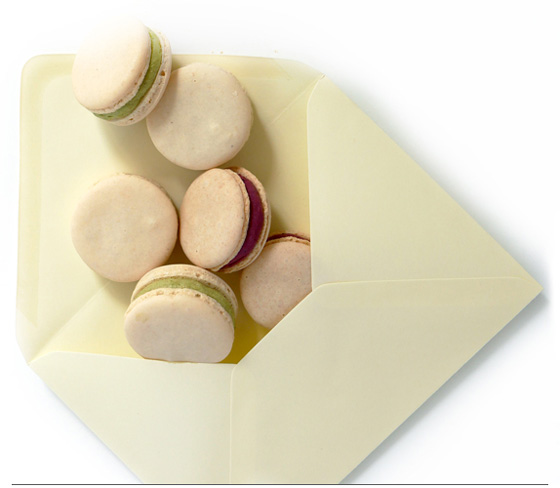
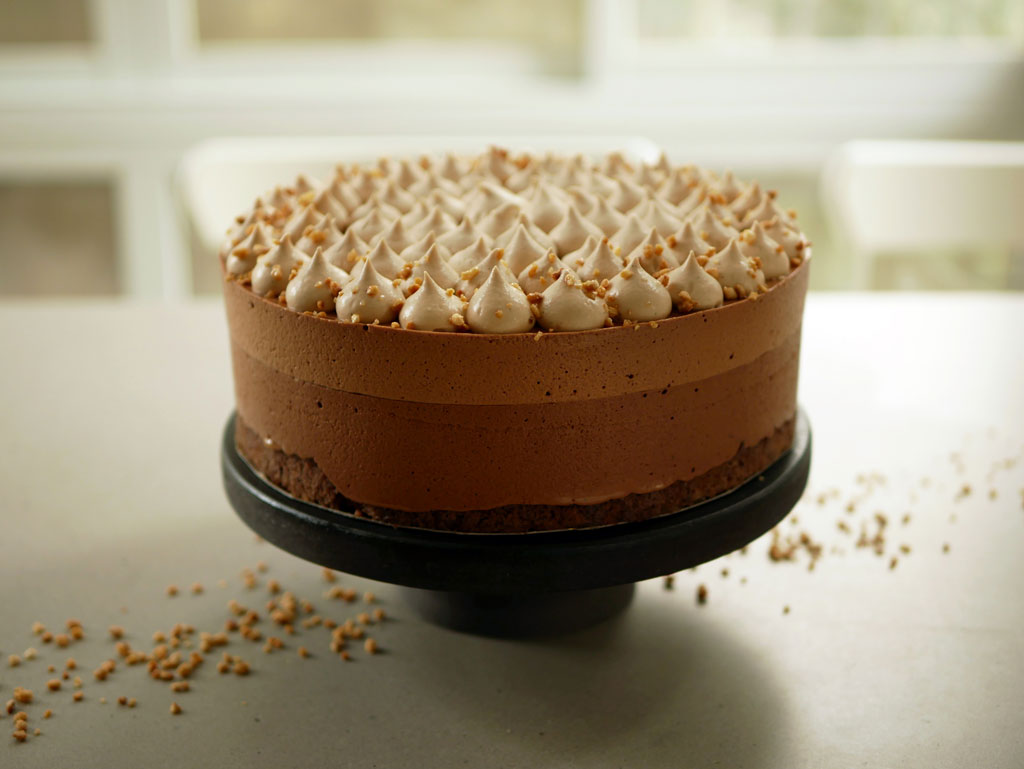

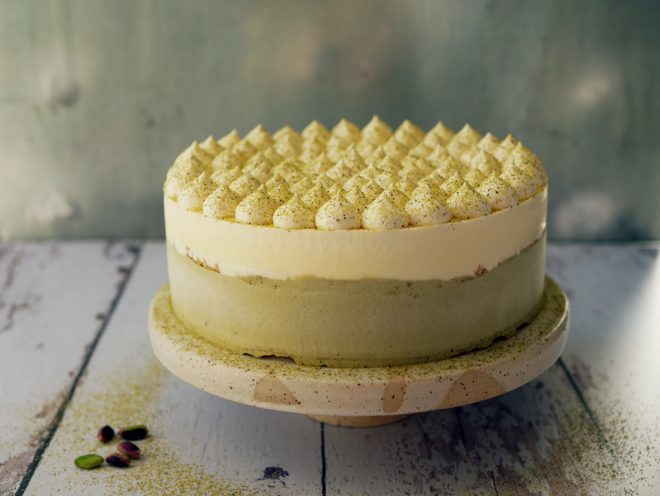

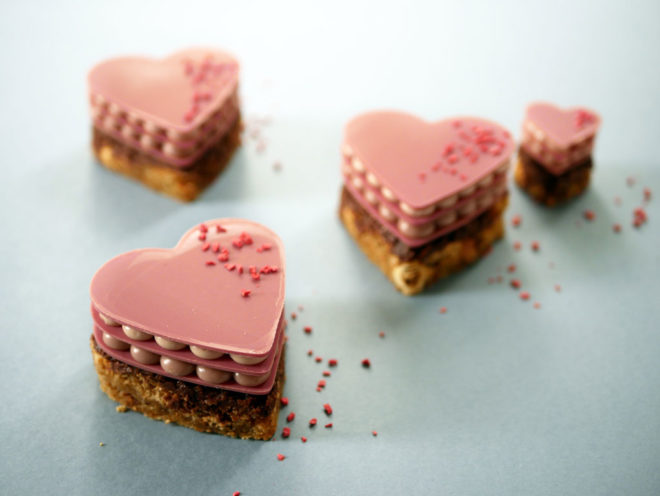







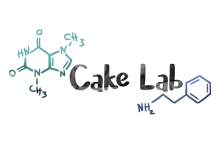
Hello! I had some doubts regarding the gianduja mousse. Did you use powdered gelatin for the gelatin mass? Because I’m not able to find gelatin sheets in my place, and can we separately combine the gelatin mass for one mousse layer as I just wanna make the milk chocolate one instead of dividing the gelatin mass? It would be highly appreciated if you could specify the amount of gelatin and water used for the milk chocolate mousse only. Thank you.
Hey Sana,
I only use powdered gelatin. right at the beginning of the recipe, I explain how I make gelatin mass using the powder.
Yes, you can do that. For the milk chocolate mousse only, mix 6g of powdered gelatin with 30g of water.
Thank you! This helped a lot, really appreciate your response<3
I’ve another question if you don’t mind, My milk chocolate gianduja mousse has been setting in the freezer for 12 hours now but it doesn’t seem too solid, it’s more like a soft texture, So I’m worried if it’ll turn into a puddle once it defrosts in the fridge. The only thing that I didn’t add in the recipe was cocoa butter as I can’t find it in my area. Please let me know if you have any advice on this.
Sorry for the late reply,
The cocoa butter is supposed to help make the mousse a little more stable. But overall, even without it, the mousse is supposed to turn solid hard after 12 hours in the freezer. Perhaps the freezer isn’t cold enough? not sure what the problem may be here :/
It turned out perfect! I was worried for no reason. The texture and flavor was out of this world! Loved the creamy texture and the rich flavor. Thank you for this masterpiece recipe:)
Oh yey! I’m so happy to hear that 🙂
Hey,there! I’ve baked the joconde twice already and I’m not sure if 15 min of baking is enough,simply because here we’re not spreading the jocond on a thin layer which would take it less time to bake unlike here where we are pouring it in a spring form and we have a thicker layer. My question to you is the joconde supposed to be a little runny even after baked? Because I bake it for over or around 25 min probably until it’s stable to the touch but it always feels somewhat raw and I can’t understand if that’s supposed to be it’s texture.
Hi Nikol,
sorry to hear that. I baked the joconde in a circular ring, 22cm in diameter, so a spring form with the same size should be baked for the same duration. How big is your pan?
The joconde is not supposed to be runny at all. It’s done baking when it actually looks like a sponge and is firm to the touch. You’re not supposed to feel it raw at all. Are you changing anything in the ingredients?
I use a 20 cm pan so I divide the ingredients of your recipe by 1.2 so that might also be a reason for my lack of success! I did bake another one today and I baked it for around 25 minutes and it was definitely better than the previous one which I baked for less than 20 min. I did slice it and it was probably over 40% raw.
You’re doing the conversion right, so the problem is not there. Is your French meringue strong and stable? do you grind hazelnut with sugar into a powder and not a paste?
Sorry for the late reply. Actually my meringue was not stable. I used leftover pasteurized egg whites which were sitting in the fridge for a while and even though they didn’t had any smell I think they weren’t good to use because they weren’t as think and no matter how long I was beating them I couldn’t get the right texture needed for the recepie. The hazelnut and powder sugar were not a paste. But the first time I made it the meringue was okay so I can’t say 100% that was the problem. But I’m sure I’ll be making this cake again and if you want I’ll leave a reply here and tell you how it went. 🙂
I really like your attitude, that’s how I also work in the kitchen. Whenever something fails I really try to understand where it went wrong and keep trying it out till it works, hehe.
The thing with the egg whites not getting whipped could also be from some oily stain in the mixer bowl. That happened to me once. Just remember it if it happens again. I hope it works out next time 🙂